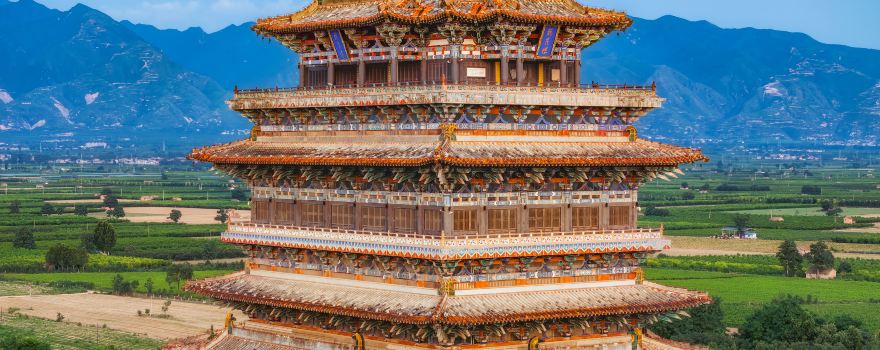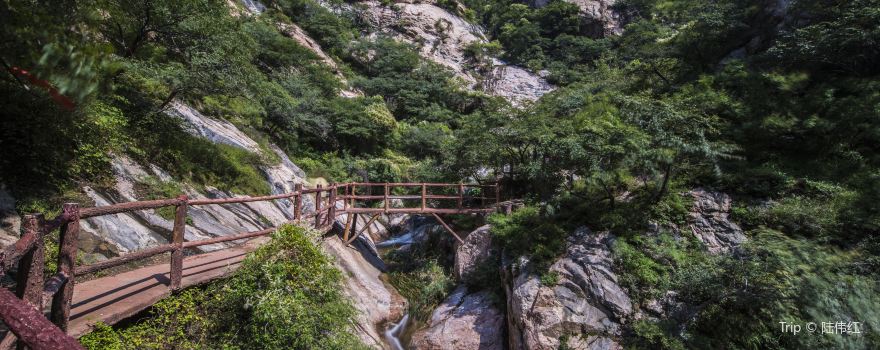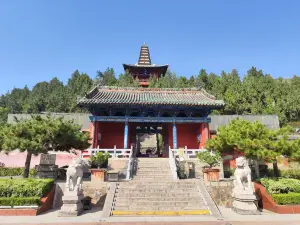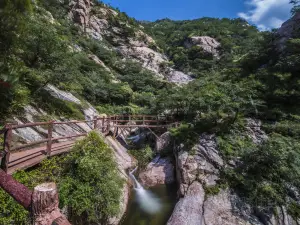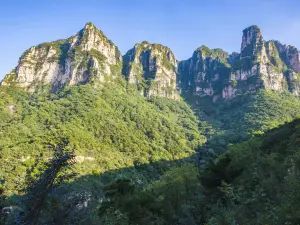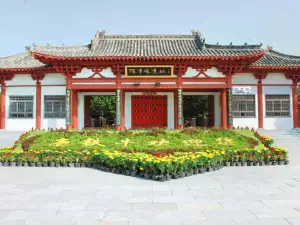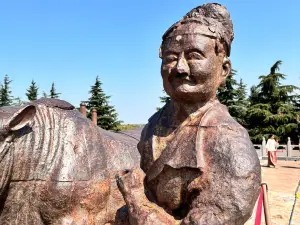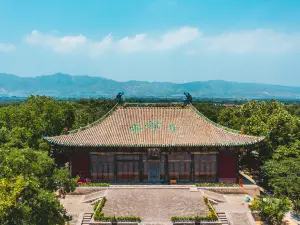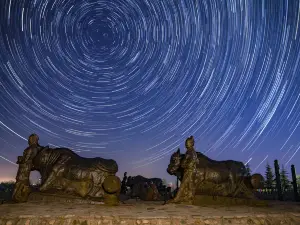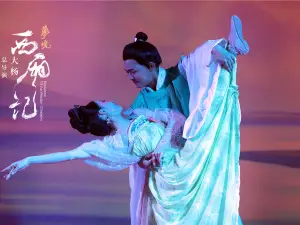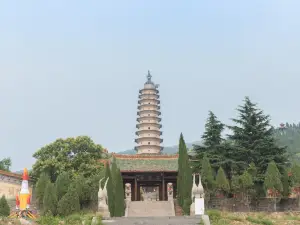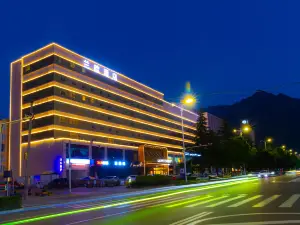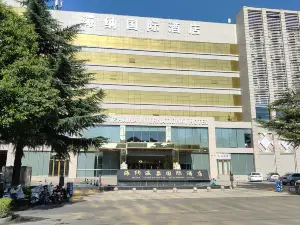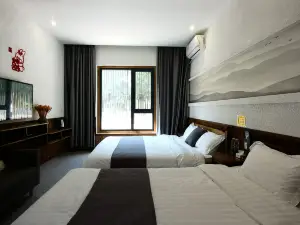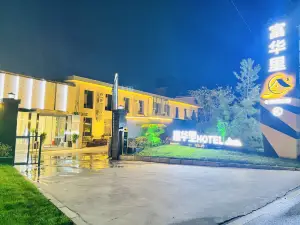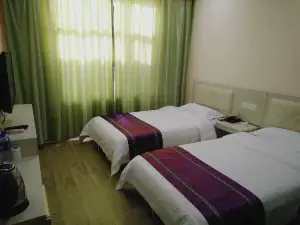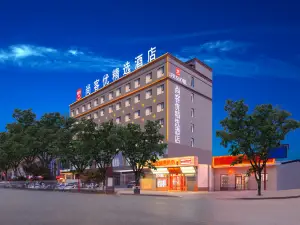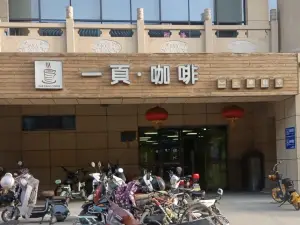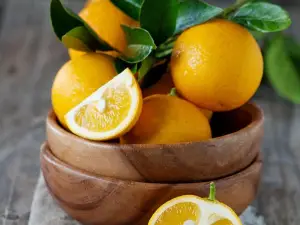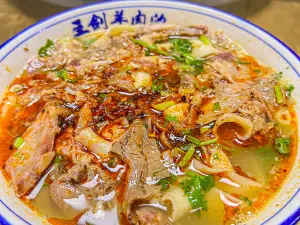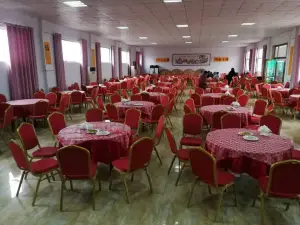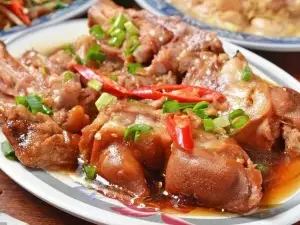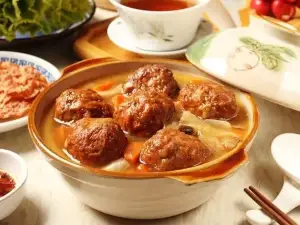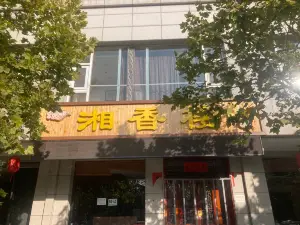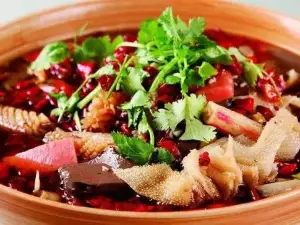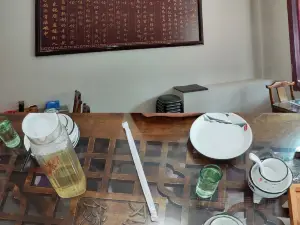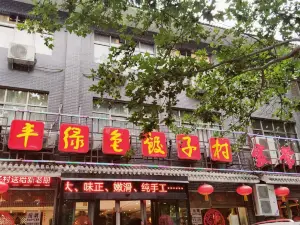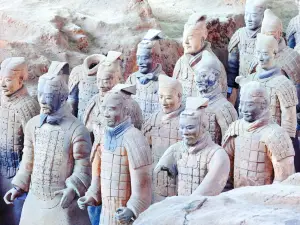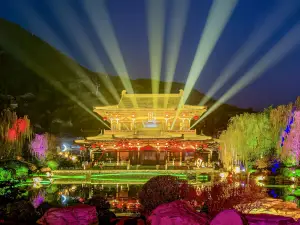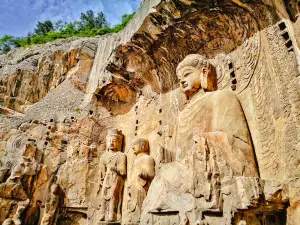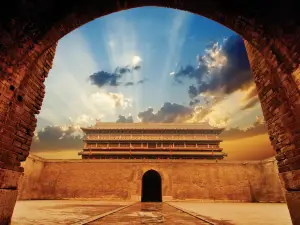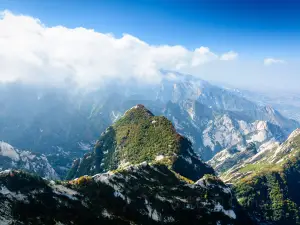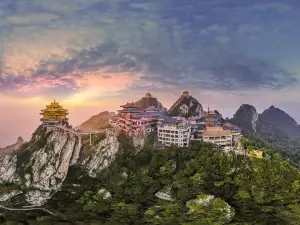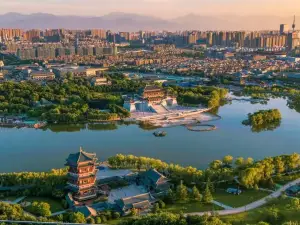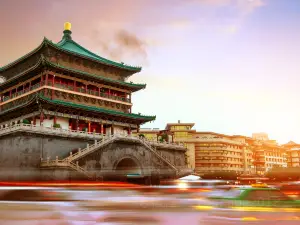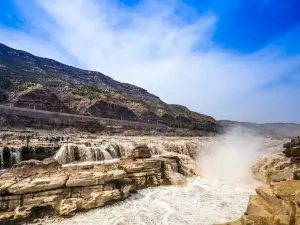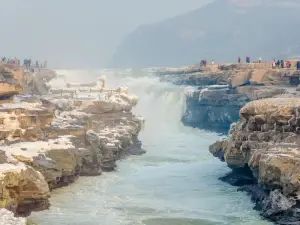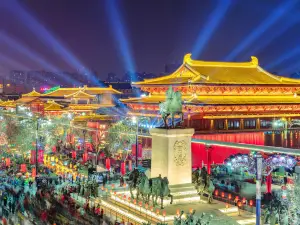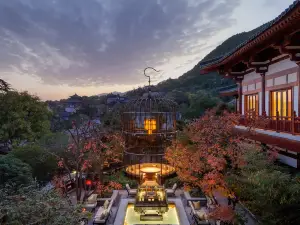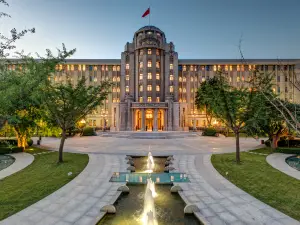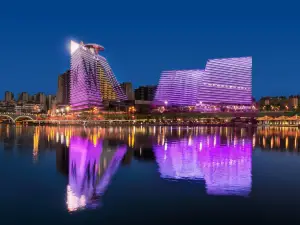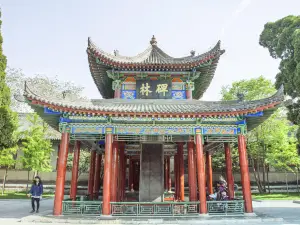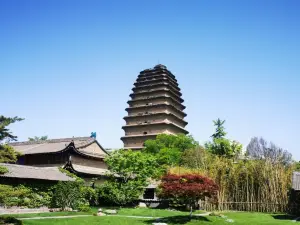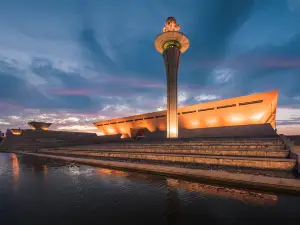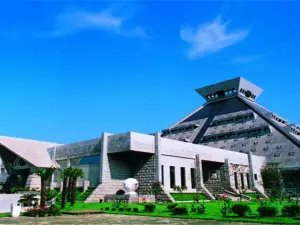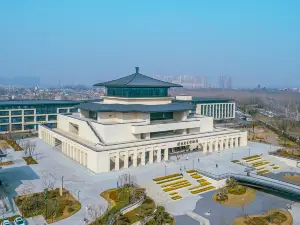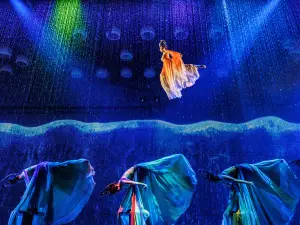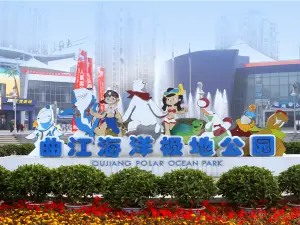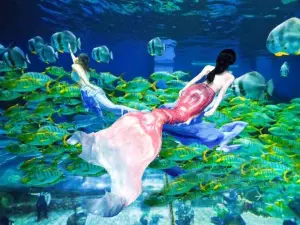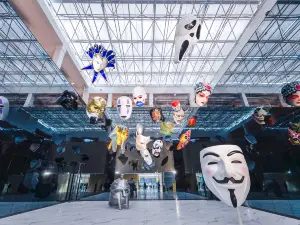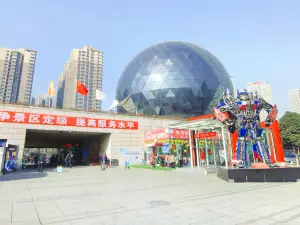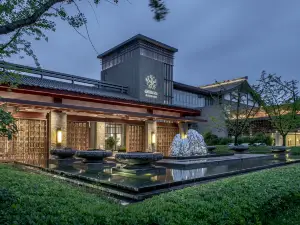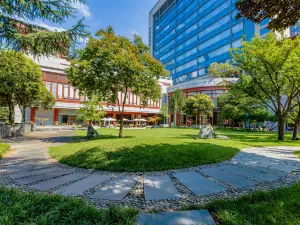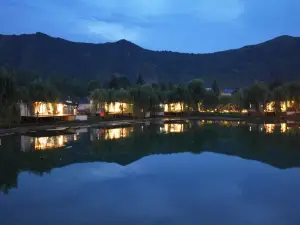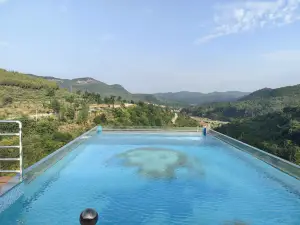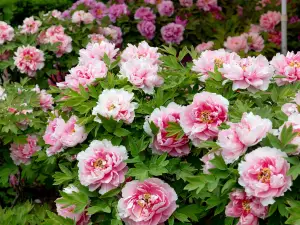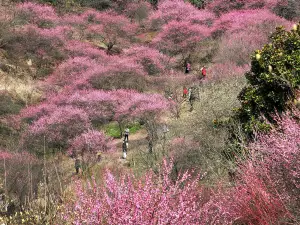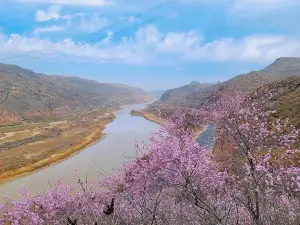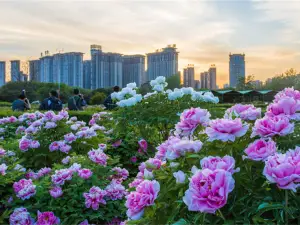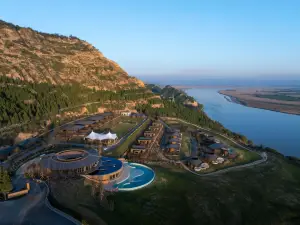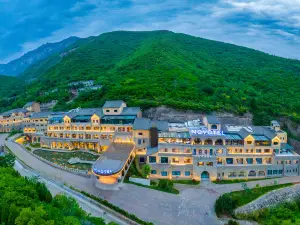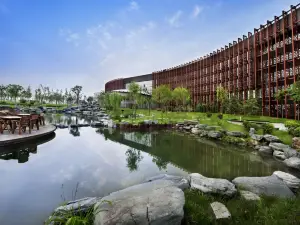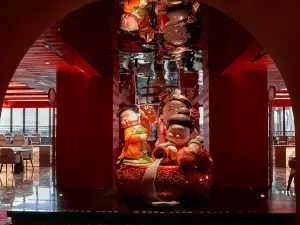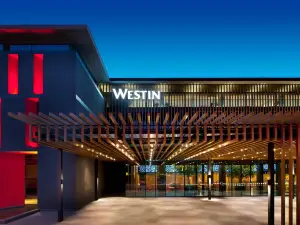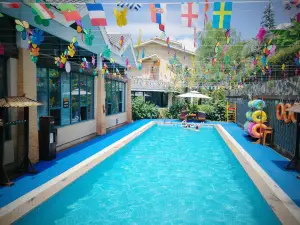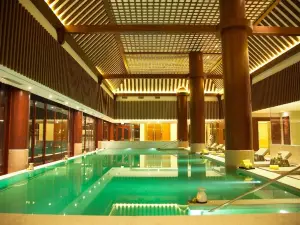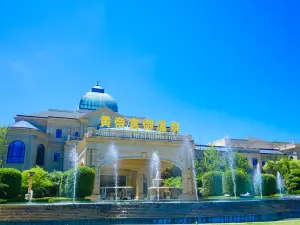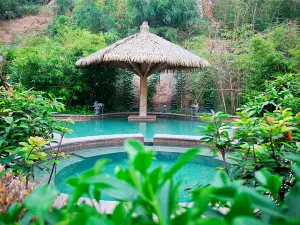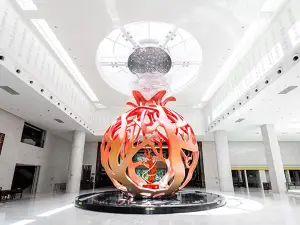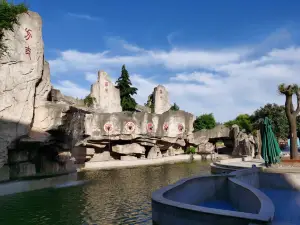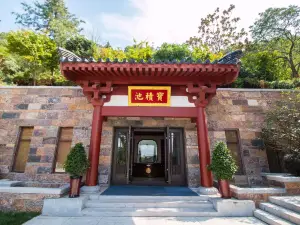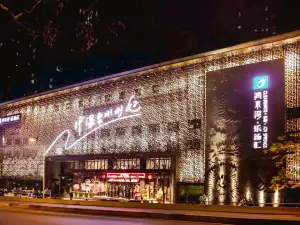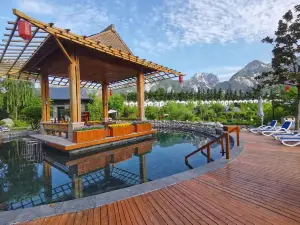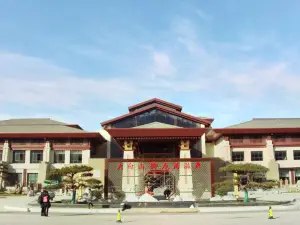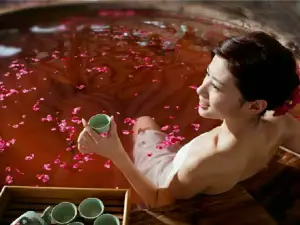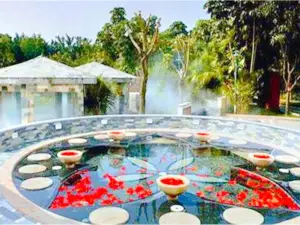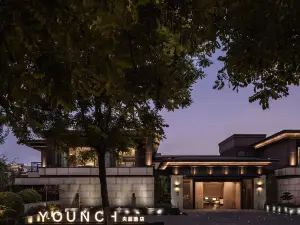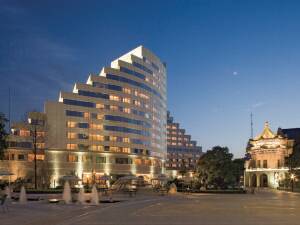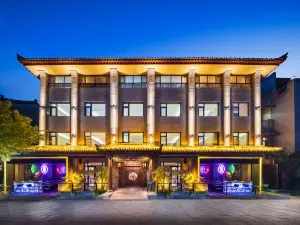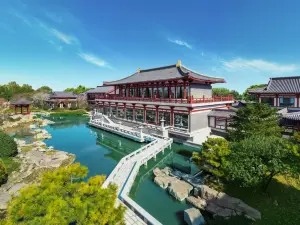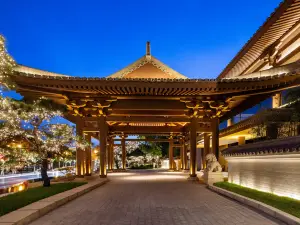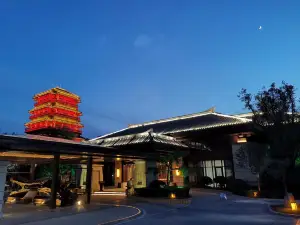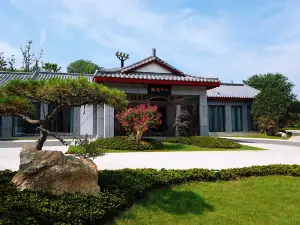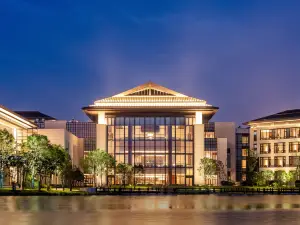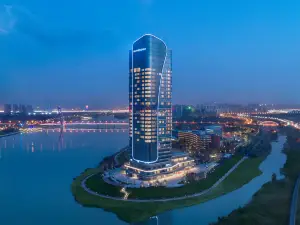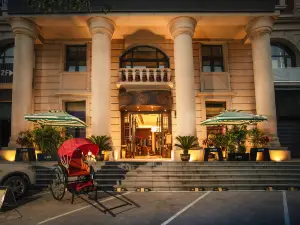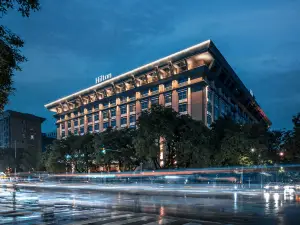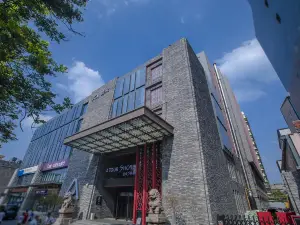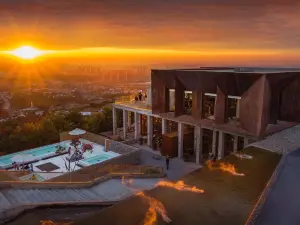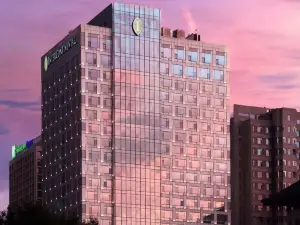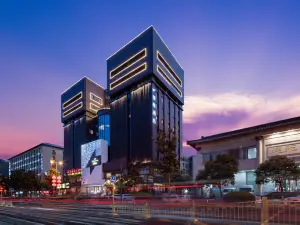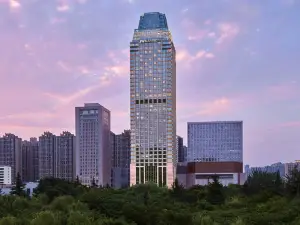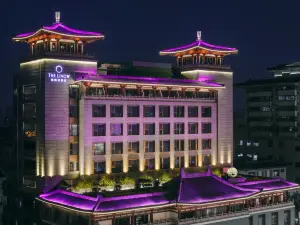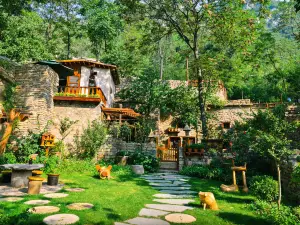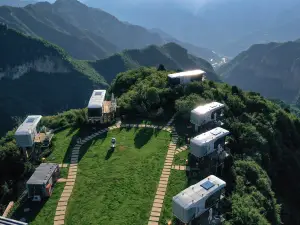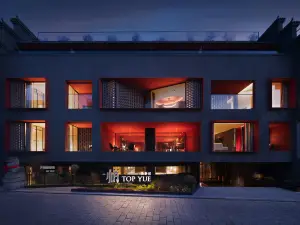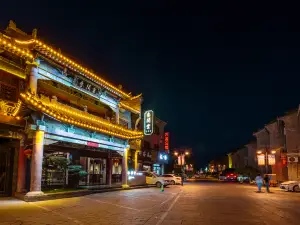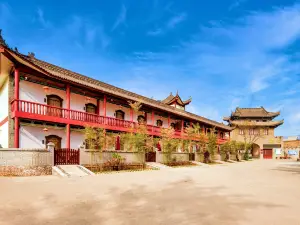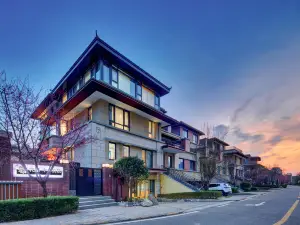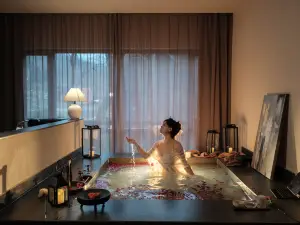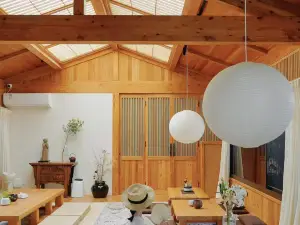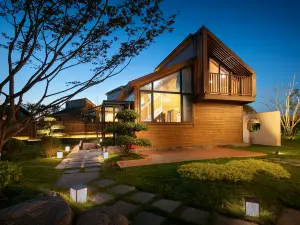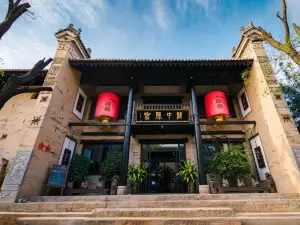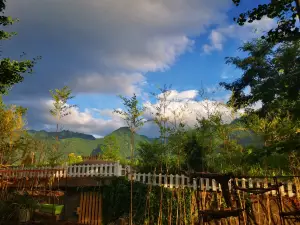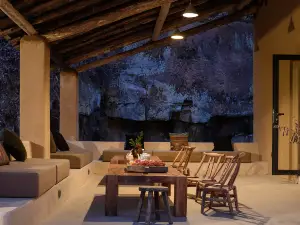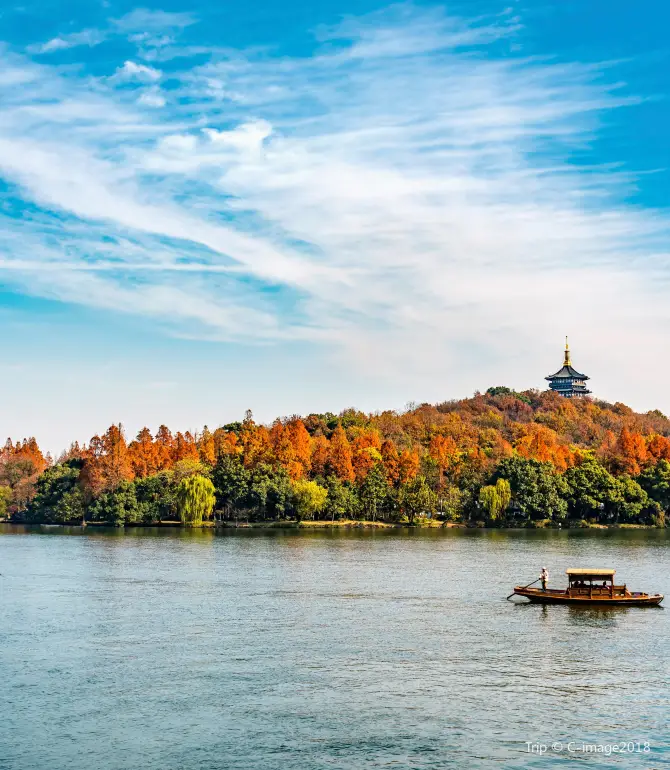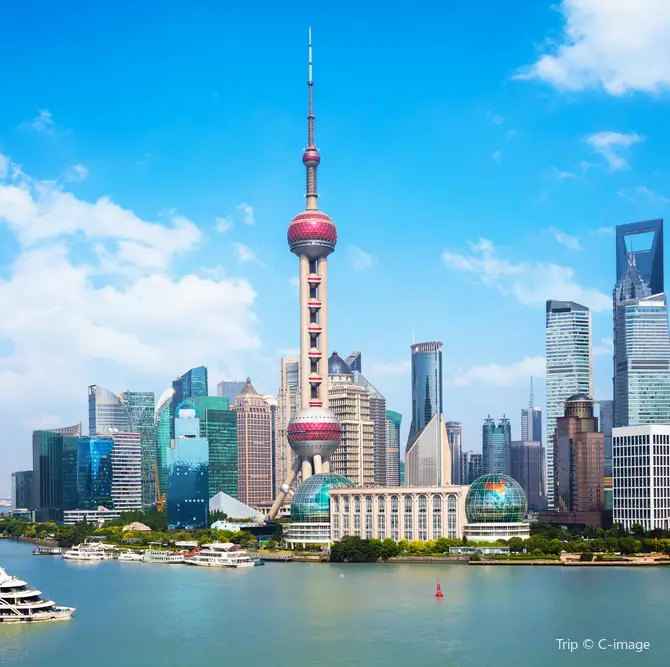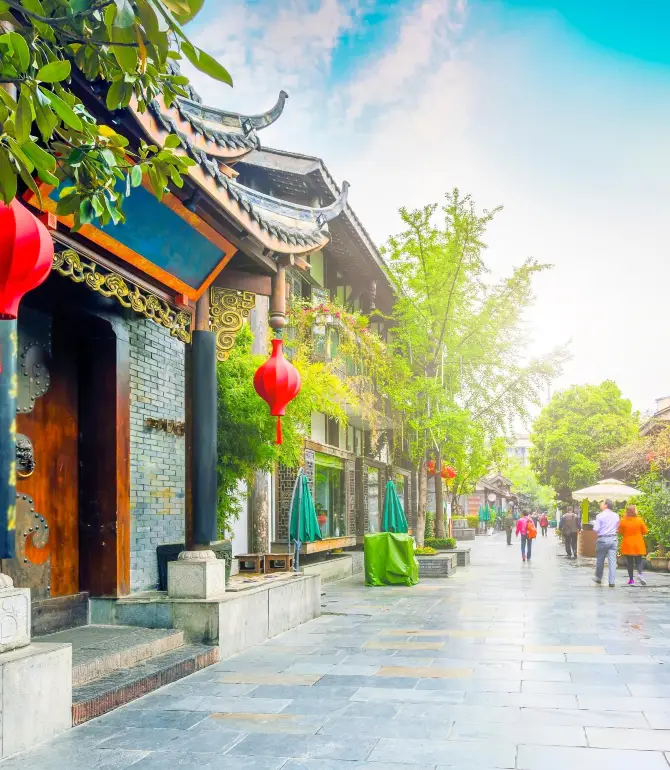Photos
Yongji
Things to Do in Yongji in 2025 - Top Attractions, Local Food, Hotels & Travel Tips (Updated April 2025) | Trip.com
About Yongji
Current Weather Conditions
Yongji Local Experiences Map
View Local Experiences on Map

Trending in Yongji
View More
Things to do in Yongji
What to Do
Looking for things to do in Yongji? We provide up-to-date info on everything from must-see scenic spots to local hangouts.
View More
Where to Stay
Discover the most popular places to stay in Yongji, complete with recommendations from fellow travelers and special hotel offers
View More
What to Eat
Want to eat like a local? Don't miss out on these top Yongji dishes and foodie spots.
View More
Yongji Moments: Through Travelers' Eyes
Post
#Recommended
#동남아항공권이벤트
#travelinginchina
#skibeijing

Home2 Suites by Hilton Yongji
Benjamin Harris 678~

Guanque Tower | A Tower with a View and a Thousand Years of History
HealthyLivingHacks

A 4-Day Trip to Yuncheng: The Perfect Qingming Getaway
WayfaringTraveler
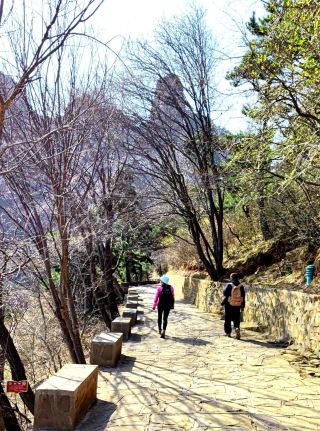
Wulaofeng - The Place Where Immortals Hide
Grace.Moore^13

The Yongji Wu Family Lake Wetland in Yuncheng is so beautiful when cycling and watching the sunset~
LUCAS OLSON

Yuncheng Travel: Yongji
INDIE BARNETT

A temple known as the 'Sanctuary of Love'
ANNALISE BARKER

Listen to "Romance of the West Chamber" at Pujiu Temple
Anderson Ava5Ava
View More
What People Are Saying About Yongji
Write a Review
Guanque Tower
Anonymous User
Pujiu Temple
M52***71
Shentan Grand Canyon
Anonymous User
Wulao Peak
山在穷游
Pujindu Site
M52***71
Yellow River Iron Bull
M52***71
Yongle Palace
上善若水 不忘初心
Yongji Tang Iron Cow Museum
三晋龙少
《 meng jing · xi xiang ji 》
meetEmily
Wangu Temple
M18***61
Best of Yongji
Popular Types of Attractions in Yongji
Historical attractions | Nature and wildlife | Natural scenery | Mountain climbing | Beaches and shores | Cultural institutions | Specialty exhibition halls | Museums | Science & technology museums | Sightseeing tours | Night view | Cable car | Boat tour | Outdoor activities | Mountain climbing | Shooting | Exhibitions & events | Performances | Exhibitions | Concerts | Parks | Amusement parks | Water parks | Ice and snow parks | Leisure activities | Farms and pastures | Camping · Campsites | Spa/massage | Water sports | Skybound experiences
Popular Attractions in Yongji
Popular Ranked Lists
Popular Luxury Hotels Near Maggona | Popular Best Things to Do in Wuzhong | Top 11 Local Restaurants in Vientiane | Popular Luxury Hotels Near Fell Lapland | Top 3 Best Things to Do in Tonghua | Popular Luxury Hotels Near Kenmore | Top 8 Best Things to Do in Chongzuo | Popular Premium Hotels in Mobile | Top 19 Local Restaurants in Shijiazhuang | Top 5 Best Things to Do in Hinggan League | Top 19 Local Restaurants in Frankfurt | Top 7 Best Things to Do in Baishan | Popular Best Things to Do in Jieyang | Popular Premium Hotels in Jacutinga | Top 3 Best Things to Do in Chizhou | Top 3 Best Things to Do in Zhoukou | Top 4 Best Things to Do in Nanping | Popular Best Things to Do in Wudalianchi | Popular Luxury Hotels Near Goslar | Popular Luxury Hotels in Malargue Department | Popular Luxury Hotels Near En Gev | Popular Local Restaurants in Yantai | Top 10 Local Restaurants in Boston | Popular Best Things to Do in Zhongxiang | Popular Luxury Hotels in Brasilito | Popular Local Restaurants in Berlin | Popular Best Things to Do in Jurong | Top 5 Best Things to Do in Yongzhou | Top 4 Best Things to Do in Dongfang | Popular Premium Hotels in Phuc Yen
Popular Restaurants in Yongji
肯德基(永济市府店) | 德克士(永济餐厅) | 解州王剑羊肉泡馆(永济分店) | 五老峰农家庄园 | Niurouwanzi Noodles | SHI WEI TIAN FAN ZHUANG | 刘杰牛肉饺子馆(电机店) | 鱼吉祥蒸汽草帽鱼 | 农家·铁锅炖 | 湘里人家(河东大道店) | DIAN JI BIN GUAN HUANG HE SHI FU SHI SHANG ZI ZHU CAN TING | 采丰绿色饺子村 | Xiaoxue Beef Dumpling House | 老狼大盘鸡(西厢路店) | 老马家牛羊肉泡馍(富强西街店) | 晋南小馆 | XU JI ROU GA MO | 重庆小面(永济市总店) | 盛唐庄园 | 重庆侨巴儿火山渔(普救寺店) | 好想你(樱花园店) | 周老大一把抓羊肉馆 | 老李家农家炖烧烤 | 悠见南山老火锅 | 西厢牛肉饺子面食馆 | 山石料理 | 自家大灶台 | 极灸日式炭火烤肉 | 漫时光·酒馆里的烤肉(永济店) | 提拉米苏(广场店)
Popular Destinations
Shanghai Travel | Leshan Travel | Milan Travel | Jingdezhen Travel | Berlin Travel | Xi'an Travel | Porto Travel | Chiang Mai Travel | Barat Travel | Dujiangyan Travel | Tbilisi Travel | Montenegro Travel | San Felipe Travel | Dandong Travel | Krabi Travel | Shuozhou Travel | Hồ Hoàn Kiếm Area Travel | Hoofddorp Travel | Songpan Travel | Kluang Travel | Reinoso Travel | Gemeinde Stinatz Travel | Kharapa Travel | Dakwadi Travel | Novopavlivs'ke Travel | Demusa Travel | Jhawoil Gram Travel | Villa Progreso Travel | Grevesmuhlen Travel | Hirky Travel
Recommended Attractions at Popular Destinations
Bangkok attraction near me | Manila attraction near me | Tokyo attraction near me | Taipei attraction near me | Hong Kong attraction near me | Seoul attraction near me | Kuala Lumpur attraction near me | Los Angeles attraction near me | Shanghai attraction near me | New York attraction near me | Shenzhen attraction near me | Osaka attraction near me | Singapore attraction near me | London attraction near me | Guangzhou attraction near me | San Francisco attraction near me | Beijing attraction near me | Macau attraction near me | Bali attraction near me | Jakarta attraction near me | Paris attraction near me | Ho Chi Minh City attraction near me | Istanbul attraction near me | Phuket attraction near me | Chicago attraction near me | Seattle attraction near me | Toronto attraction near me | Orlando attraction near me | Cebu attraction near me | Chiang Mai attraction near me
Popular Trip Moments
A 4-Day Trip to Yuncheng: The Perfect Qingming Getaway | Puzhou has the national treasure Iron Ox, the ruins of the ancient city, Puji Temple, and Guanque Tower. | 【The Story of the West Chamber】 birthplace, a love story that saved the Pujiu Temple... | Ancient Autumn Charm - Slow Travel in Yuncheng | Shanxi | Shanxi-Shaanxi 7-Day Tour: Explore Two Provinces Without Backtracking | Climb up to Guanque Tower, one of the four famous towers | Shanxi-Shaanxi-Wutai Mountain City Walk, Magnificent Scenery Waiting for You to Explore | Guanque Tower | A Tower with a View and a Thousand Years of History | Guanque Tower: A Thousand-Year-Old Poetic Tower in Shanxi | Pujue Temple | A Tang Dynasty Temple with a Thousand-Year-Old Love Story | Guide to visiting Puji Temple, a holy place for love | Wow! The Quanshen Temple in Jincheng is amazing! | Wanggu Temple, Yuncheng, Shanxi | Guanque Tower: Where Poetry Meets the Horizon in Shanxi 🏯🌅 | Visiting Nanshan Ski Resort | 8-Day Winter Vacation Tour of Pingyao Ancient City and More: The Ultimate Guide | Home2 Suites by Hilton Yongji | Ski at Nanshan Ski Resort Beijing | Yuncheng Dongcun Theater | Hometown of Tang Mingchen | Pujiu Temple, the setting of the love story in Romance of the Western Chamber | Listen to "Romance of the West Chamber" at Pujiu Temple | Pujiu Temple | Yongji Wuxing Lake | Where the Five Surnames Once Were | Yongji Bian Que Temple | There is Bian Que Tomb next to it | Yongji Qiyan Temple Pagoda Forest | Explore Tang Dynasty Pagoda Inscriptions | Yuncheng Yellow River Iron Ox | Treasure of the Yellow River | Wangong Temple, Yuncheng | Explore the Ancient Temple of Zhongtiao Mountain | Yuncheng Wulaofeng | Known as "Donghua Mountain" | Yuncheng Yaowang Terrace | The birthplace of Chinese civilization
Popular Travel Types
More Things To Do in Yongji
Yuncheng Travel Photography[Driver and director + makeup and Clothes & Accessories+ itinerary customization + aerial micro-film + free negatives + no limit on the number of people] | Shanxi Yuncheng - Puji Temple - Guanque Tower - Salt Lake - private charter one-day tour | China | 5G/4G eSIM | Day Pass/Total Package | 24H | 1-30 days | QR code | China 5G eSIM | Day Pass / Data Package | 1-30 Days | 24-Hour Billing | QR Code | China/Hong Kong/Macau 5G eSIM | Day Pass / Data Package | 1-30 Days | 24-Hour Billing | QR Code | China/Hong Kong/Macao/Taiwan | 5G/4G eSIM | Day Pass/Total Package | 24H | 1-30 days | QR code | China eSIM 4G/5G high-speed network QR code | Asia 8 countries 4G/5G eSIM | DayPass/Total | 1-30 days | QR code | Global (66 countries) | 4G/5G eSIM | Data packages | 24H | 1-7 days | QR code | China eSIM | 5G/4G | China Mobile | Total Package&Day Pass | Natural Day | 1-30days | QR code | Global 77 Countries 4G/5G eSIM | Day Pass / Data Package | 1-30 Days | 24-Hour Billing | QR Code | Mainland China, Hong Kong & Macau 5G Travel eSIM | Flexible 1-30 Days Plan | Instant Setup via QR Code | [China Mainland] eSIM | SIM to China | 8GB 8days 4G high speed | Southeast Asia (7 countries) | 4G/5G eSIM | Day Pass/Total package | 24H | 1 - 30 days | QR code | China Mainland + Macau 5G/4G eSIM QR Code by China Unicom | Shaanxi Huashan Mountain Hiking one-day tour[Chinese/Mandarin/English guide Guide] v | Hancheng + Hancheng Ancient City + Hancheng Confucian Temple + Sima Qian Temple attraction+ Dang Family / Multilingual guide@ | Xi'an Huashan Day Tour | Asian countries and regions 5G eSIM Daily Package Brunei/Indonesia/Singapore/Japan / no need to take card (QR code) | Mount Hua1-day Tour | [Mainland China/Hong Kong/Macau] 4G SIM Card | China Unicom/Hutchison/CTM | High-speed Data SIM Card | Optional Days | Insert and Use | | Private Transfer between Mount Hua and City hotel | Xi'an Huashan Adventure One Day Tour(WEST UP&NORTH DOWN) (XA-MT) | Global eSIM | 5G/4G | Total Package&Day Pass | Natural Day | 1-30days | QR code | Huayin + Huashan North Peak + Huashan North Peak Cableway + Ladder + Canglong Ridge / Multilingual guide@ | China + Hong Kong + Macao eSIM | 4G | High Speed Data | Natural Day | 1-30days | QR code | Xi'an Private Guided 1-Day Tour to Huashan, Enjoy the Spectacular Scenery in the Clouds | Saint Statue of Guan Yu + Temple of Guan Yu + Yongle Palace + Temple of Prince Guangren | Private Day Trip to Mount Hua from Xi'an with English Driver | Xi'an Huashan Scenic Area Hiking Adventure Day Private Tour
Payment Methods
Our Partners
Copyright © 2025 Trip.com Travel Singapore Pte. Ltd. All rights reserved
Site Operator: Trip.com Travel Singapore Pte. Ltd.
Site Operator: Trip.com Travel Singapore Pte. Ltd.

